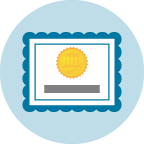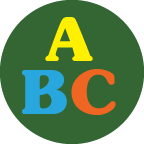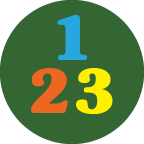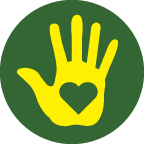 Colors Activities
Colors Activities
Learning colors can be fun with these activities.
-

- Activity Title
- ?
Topic or Theme
Identifying letters in a child's name and listen to ABC (The Alphabet Song)

-


First Name
Brief description of activity or summary of tasks and/or materials used.
-





-
- Colors
- 08
Orange
Using a fruit to teach the color orange
-
Orange
Using a fruit to teach the color orange
-


-
- Colors
- 09
Blue
Using a calendar for planning and reinforcing color blue
-
Blue
Using a calendar for planning and reinforcing color blue
-


-
- Colors
- 08
Black
Read the book "The Color Monster, A Story About Emotions" and do a counting activity in the car
-

Black
Read the book "The Color Monster, A Story About Emotions" and do a counting activity in the car
-



-
- Colors
- 08
Purple
Read "Harold and the Purple Crayon" and mixing colors
-
Purple
Read "Harold and the Purple Crayon" and mixing colors
-


-
- Colors
- 09
Black
Listen to the song "Miss Mary Mack" and using dominos for building
-
Black
Listen to the song "Miss Mary Mack" and using dominos for building
-




-
- Colors
- 09
Brown
Painting with potatoes
-
Brown
Painting with potatoes
-




-
- Colors
- 09
Grey
Creative drawing using the color grey
-
Grey
Creative drawing using the color grey
-



-
- Colors
- 08
Brown
Read book "Brown Bear, Brown Bear, What Do You See?" and find brown colored objects
-
Brown
Read book "Brown Bear, Brown Bear, What Do You See?" and find brown colored objects
-



-
- Colors
- 09
Yellow
Reviewing letters and sounds of A and E and the color yellow
-
Yellow
Reviewing letters and sounds of A and E and the color yellow
-




-
- Colors
- 08
Green
Reading "I Don't Want To Be A Frog" and using green napkins
-
Green
Reading "I Don't Want To Be A Frog" and using green napkins
-

-
- Colors
- 09
Red
Art activity using color red and #3
-
Red
Art activity using color red and #3
-


-
- Colors
- 09
Purple
Exploring the color purple
-
Purple
Exploring the color purple
-

-
- Colors
- 09
Green
Finding things that are green
-
Green
Finding things that are green
-
- Colors
- 08
Reviewing Colors
Learning colors by going on a "Color Hunt"
-
Reviewing Colors
Learning colors by going on a "Color Hunt"
-


-
- Character Traits
- 12
Courage
Read "The Little Engine that Could" while teaching the meaning of courage or Click here to Read/Listen
-
Courage
Read "The Little Engine that Could" while teaching the meaning of courage or Click here to Read/Listen
-



Activity Skills Focus
1 Social / Emotional Skills
Skills that develop children’s ability to understand the emotions of others and help children recognize and use appropriate social behaviors (for example, making friends). In the Department of Education report “Guiding Principles A Resource Guide for Improving School Climate of January 2014 it states “strategies such as social-emotional learning programs that address non-cognitive skills, including problem-solving, responsibility and resiliency, can also help students develop the skills needed to fully engage and thrive in the learning environment.”
2 Language Skills
Skills that help children understand and communicate during early childhood. The alphabetic principle (knowing letter names and sound-letter matches) aids in language development and is enriched by verbal interactions with other children and adults (reading aloud and engaging in conversation).
View all Language Skills Activities
3 Math / Science Skills
Math and Science skills help children with problem-solving and reasoning. Exploring numbers, patterns, and measurements by using math manipulatives (beads, counters, pennies) are all ways children develop their math skills. Asking questions about their surroundings, learning a science vocabulary (predict, observe), and having hands-on experiences with their environment can help develop their science skills.
4 Motor Skills
Motor skills are actions that involve the movement of muscles in the body. They are divided into three groups:
1. gross motor skills, which are the larger movements of arms, legs, feet, or the entire body (crawling, running, and jumping)
2. fine motor skills, which are smaller actions, such as grasping an object between the thumb and a finger (pencils or scissors)
3. sensorimotor skills which use the five senses to guide physical motions as in eye-hand coordination.
View all Motor Skills Activities
5 Problem Solving Skills
Skills that help with the construction of thought processes, including memory, problem-solving, and decision-making.
